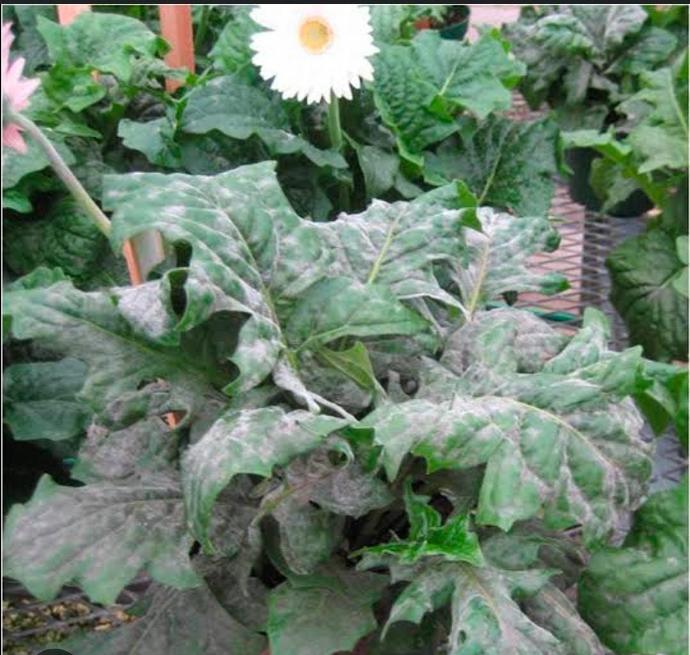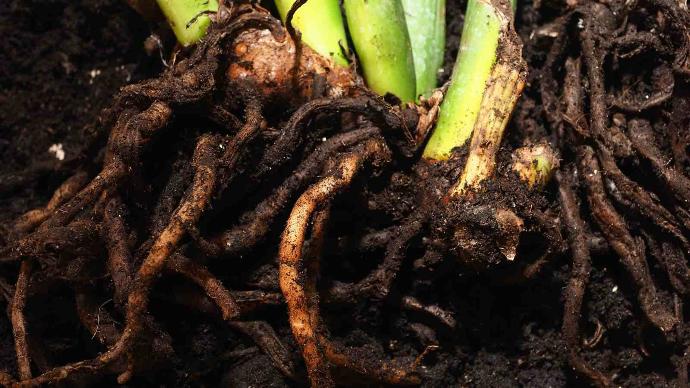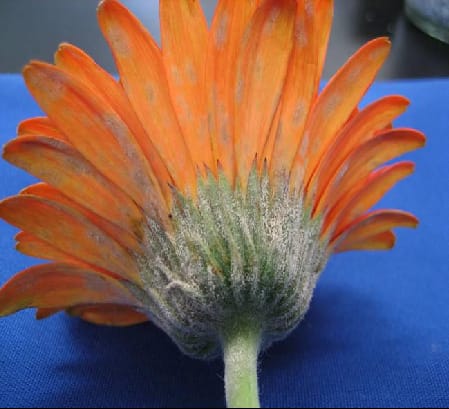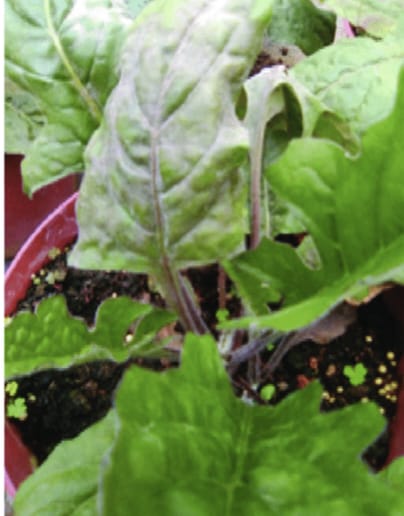Gerbera Plant
Gerbera, also known as Gerbera jamesonii, is a vibrant flowering plant. Plant in well-draining soil with full sun to partial shade. Water consistently, and deadhead spent flowers to promote continuous blooming. Fertilize during the growing season for optimal flower production.
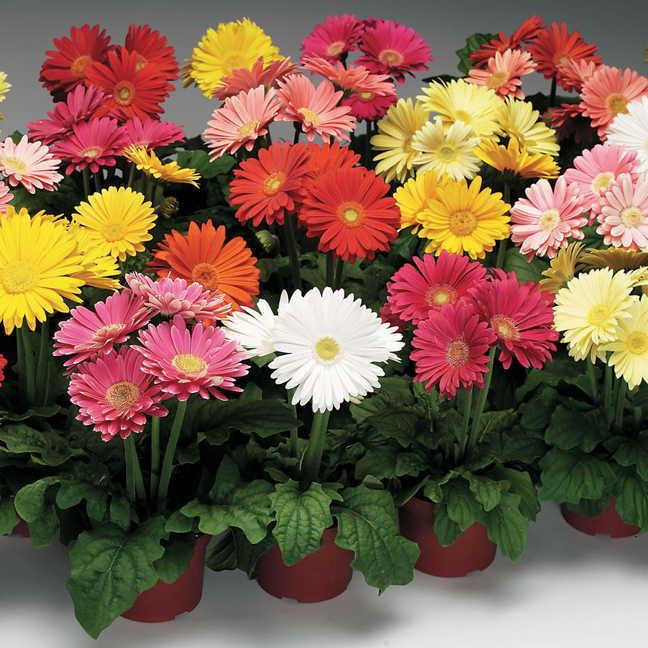
Habit
Perennial
Height
Up to 18 inches
Growth
Moderate
Soil
Well Drained, Loamy
Shade
Full Sun to partial shade
Moisture
Moist
Edible
No
Medicinal
No
Origin
Africa
Climatic Condition
Temperate, Subtropical
Temperature (°)
15-30
Humidity (%)
50-70%
Potting media
Loam, Compost
Fertilizers
Organic
Watering
Moderate
Plant Weight
300-800 g
Flowering Time
Year round
Soil Ph level
6.0-7.5
Water Ph level
6.0-7.5
Soil EC
1.0-1.3
Yield Per Plant
Ornamental, air purification
NPK ratio
10:10:10
life Span
Perennial
Health Benefits
Absorbs toxins, Boosts mood
Suggested Grow Media or Potting Mix ?
50% peat, 25% compost, 25% sand
Suggested Fertigation/Fertilizers
Fertilize every 2 weeks with a balanced fertilizer.
Common Diseases and Remedies
Root rot , Powdery Mildew.
stunting growth , the entire plant dry
soil sterilization , drenching with bacillus subtilis 2g/lit.
HEALTH BENEFITS
- Respiratory support: May help with coughs, bronchial congestion, and phlegm
- Antioxidants: May help reduce oxidative stress and lower the risk of chronic diseases
- Skin health: May help soothe skin irritations, reduce redness, and promote skin regeneration
- Air quality: May help remove indoor pollutants like benzene and formaldehyde
- Mental well-being: May help boost mood, relieve stress, and promote a sense of calm
- Physical health: May help with cold symptoms, drowsiness, and headaches.
- Oxygen production: May help with sleep and alertness.
What Is A Gerbera Tree?
Gerbera refers to the Asteraceae (daisy family) plant genus commonly known as gerberas. These colorful ornamental flowers are popular in gardens and as cut flowers due to their bright and unusual colors.
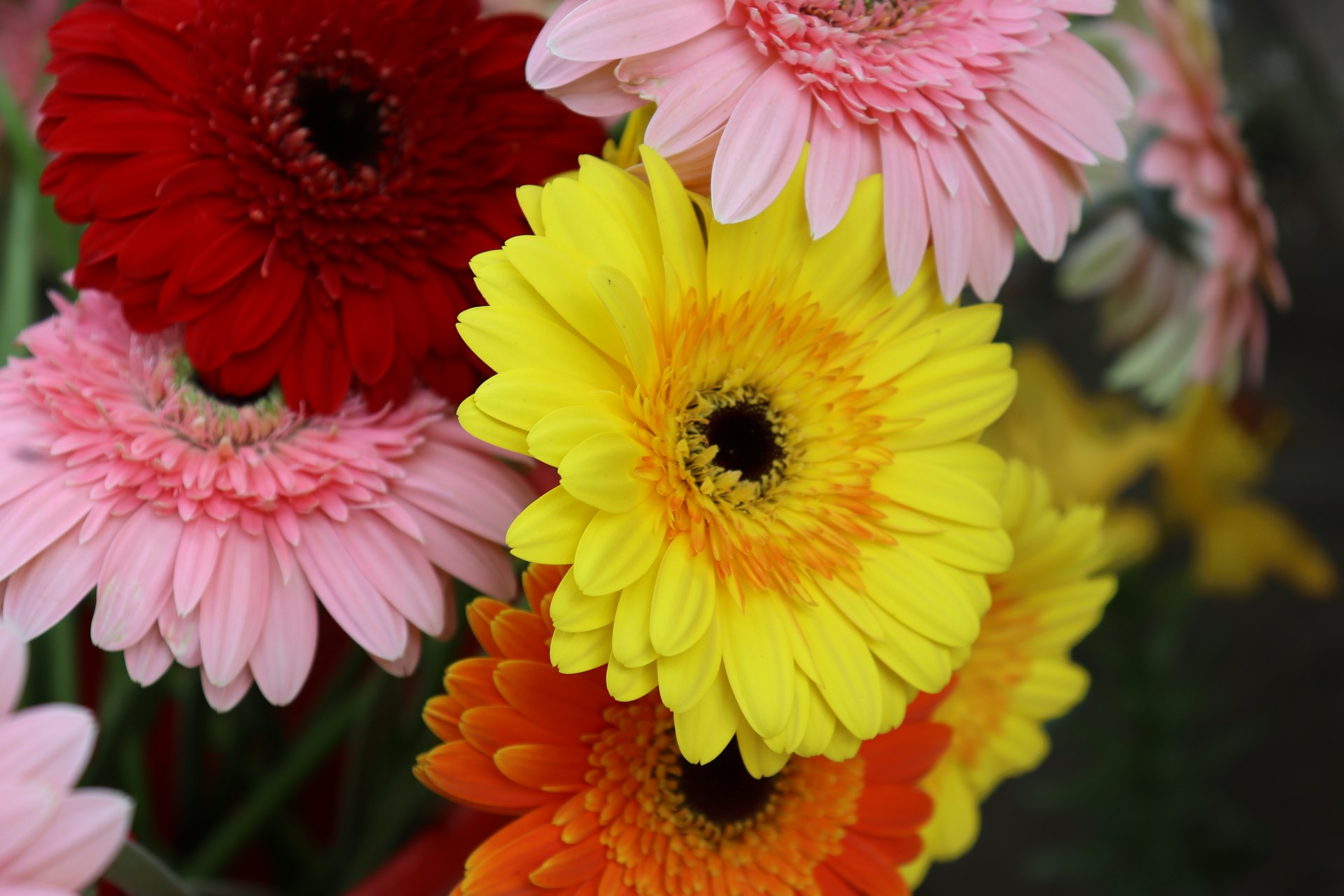
What Are The Different types of Gerbera?
There are different types and colors of Gerbera daisies. Species include single-flowered gerberas, double-flowered gerberas, crested two-flowered gerberas, and spider gerberas. It's available in many shades, from bright red and pink to soft pastels and white.
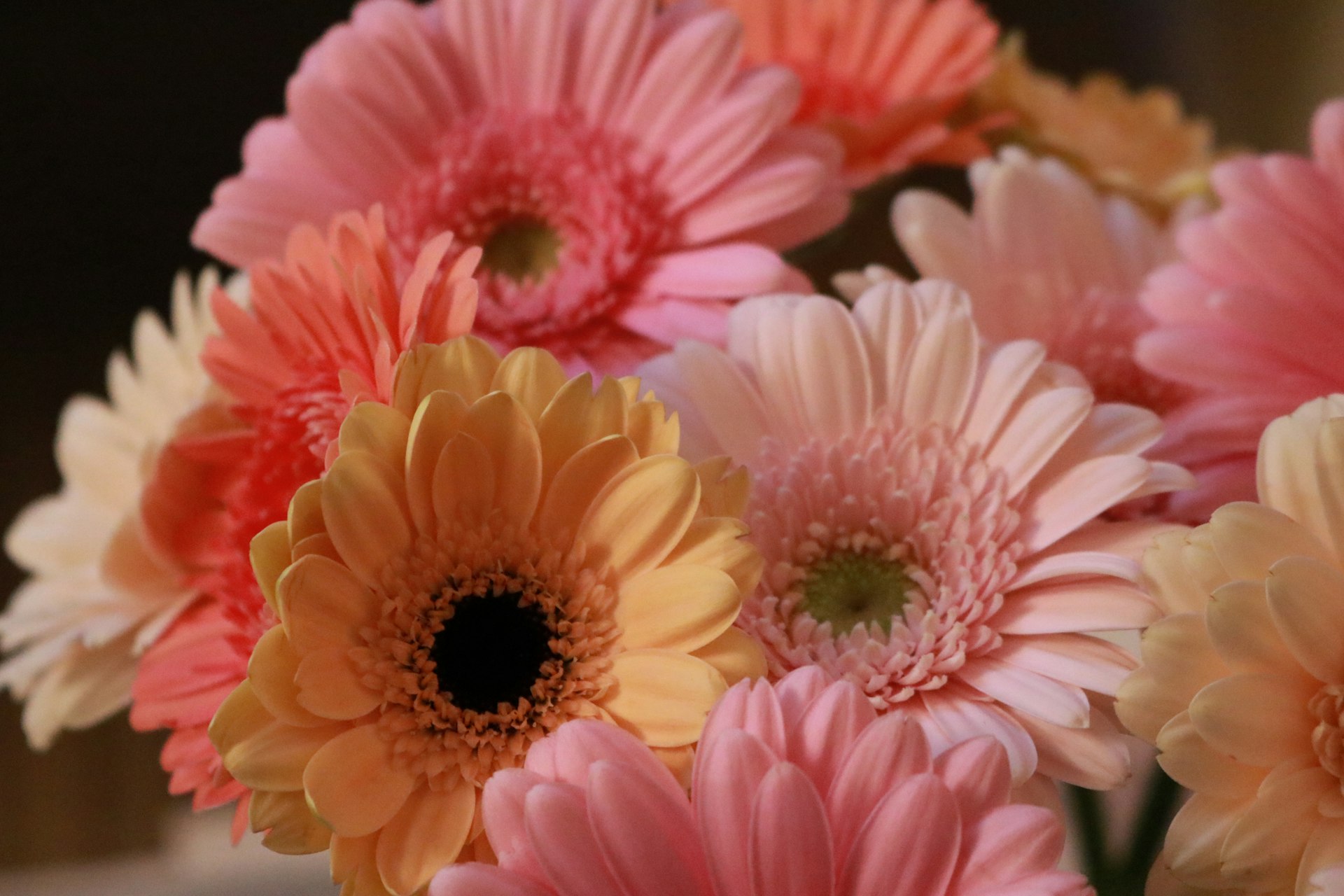
How to care for Gerbera?
1.Location:
Gerbera daisies thrive in full sun, so choose a location that gets at least 6 hours of direct sunlight per day. To prevent root rot, make sure the soil drains well and water the plants when the topsoil is dry. Keep the soil moist at all times but not waterlogged.
2.Sunshine:
Provide at least 6 hours of bright, indirect sunlight per day. Keep soil moist but not waterlogged. Water when the soil surface is dry.
3.Soil :
Gerberas like good soil with slightly acidic to moderate pH (about 6.0 to 7.5). Use a good potting mix with perlite or sand added to improve drainage. Water regularly to keep the soil evenly moist but not waterlogged. Make sure pots or garden beds have good drainage to prevent water stagnation. Apply water evenly every 2-4 weeks throughout the growing season. Deadhead flowers encourage continuous blooming.
4. Hydration:
Gerbera daisies like well-drained soil, so be careful not to overwater. Water when the topsoil is dry and make sure the pot has drainage. Keep the soil moist but not waterlogged. It is best to water in the morning to allow excess moisture to evaporate throughout the day. Also maintain 40-50% humidity around the plant.
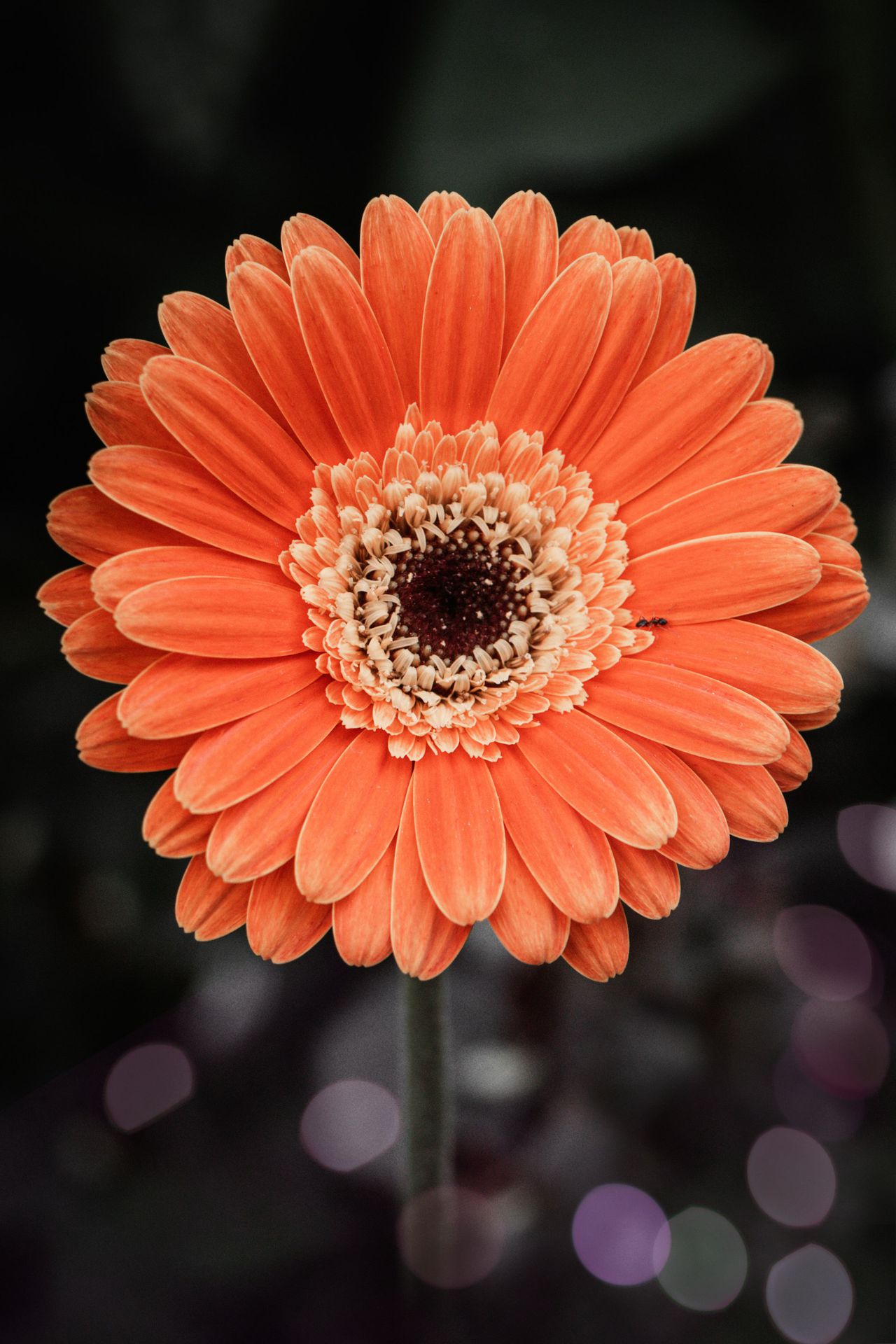
5.Nourishment :
To care for gerberas, provide them with well-drained soil, full sun (6-8 hours per day) and water when the top layer of soil is dry. Apply a balanced fertilizer every 4-6 weeks during the growing season. Since gerbera daisies are sensitive to cold temperatures, deadhead flowers encourage continued blooming and protect them from frost. Also ensure good air circulation to prevent diseases and repot every two years to replenish the soil.
6.Issues:
To care for Gerbera daisies, provide well-drained soil, water when the top layer of soil dries, and place in a sunny location. Deadhead blooms regularly, fertilizing every 4-6 weeks during the growing season. Protect them from frost and keep the air clean to prevent diseases. Watch for signs of pests such as aphids and treat accordingly.
What Are The Benefits of Gerbera?
Gerbera flowers have many advantages such as beautiful colors and diversity, making them popular for decorative use. They are also known to improve air quality by absorbing toxins and releasing oxygen. Some people also believe in the gerbera symbol, which is associated with happiness, purity and joy. Additionally, these flowers are easy to care for and are suitable for both indoor and outdoor use.
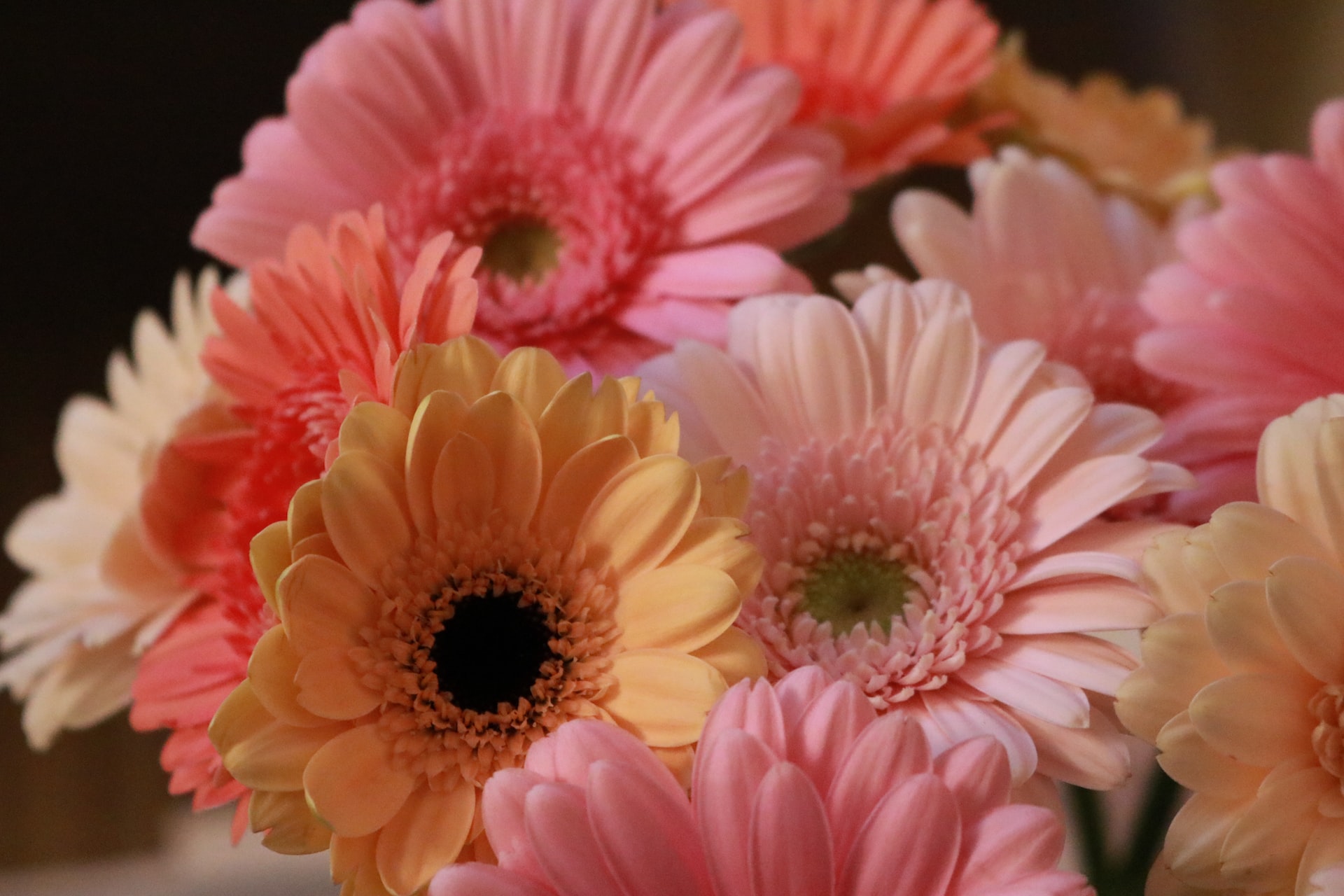
FAQ’s About Growing of Gerbera
1.How to care for Gerbera?
Keep the soil moist at all times, but not stagnant. Water the plants when the top soil is dry. Gerberas prefer full sun to partial shade. Place them where they will receive at least 6 hours of sunlight per day.They thrive in places where temperatures are 18-24°C (65-75°F) during the day and slightly cooler at night. Well-drained soil is important. Use a mixture of potting soil and perlite or sand to ensure good drainage. Apply liquid evenly every 2-4 weeks throughout the growing season (spring and summer). Permanent removal of inflorescences to encourage continued flowering and prevent seed production. Watch out for pests such as aphids or spider mites. Insecticidal soap can help control them. Good air quality is important in preventing diseases. Do not overcrowd plants.
2.What are Gerberas used for?
Gerbera flowers are often used in decorations such as flower arrangements and bouquets due to their bright colors and large, daisy-shaped flowers. They can also be used to add a splash of color in landscaping. Gerbera daisies also have some medicinal properties, but their use in this case is not widespread.
3.Can I grow Gerbera daisies at home?
Yes, you can grow Gerbera daisies at home. Make sure they get full sun, well-drained soil and proper watering. Maintain a temperature of 65-75°F (18-24°C) for optimum growth.
4.What is the best pot for growing gerberas in India?
While growing gerberas in India, it is recommended to use a good pot with a diameter of at least 12 inches. Clay or plastic pots work well. Make sure the pot has a water hole to prevent water from dripping. Use a good mix of organic matter. Gerberas grow in slightly acidic and neutral soils. Regular watering of the pots and placing them in a place with partial sun is also important for their growth.
5.Where to buy Gerbera in India?
You can find Gerbera flowers at local florists, florists or online flower services in India. Websites such as Ferns N Petals, FlowerAura, and local florists may offer gerberas for purchase.
